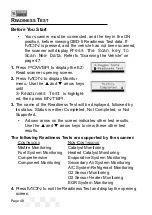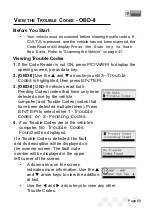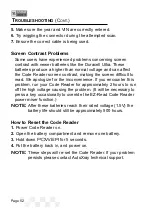
vehicles sold in the United States meet OBD-II requirements by the
1996 model year. The first OBD-II systems appeared on selected
vehicle types in 1994.
Some important OBD-II requirements are: Vehicle service
information available to all technicians; Standardization of Terms:
Use of SAE J-1930 recommended terms; OBD-II requires a
common Diagnostic Link Connector (DLC) and specifies its location
in the vehicle; Generic scan tool; Generic emission related
Diagnostic Trouble Codes (DTC); and a very specific Malfunction
Indicator Light (MIL) illumination protocol.
One very important part of the OBD-II requirements is that
technical service information for emissions related components and
systems, which could affect the vehicle's emission levels, will be
available to all technicians; not just OEM dealership technicians.
This will allow all technicians to better understand how the systems
recognize faults and set the DTCs. The technician can now make a
repair and verify the repair by exactly duplicating the criteria that is
required for the DTC to be set.
1. AutoXray warrants to its customers that, on the date the Products are delivered, they shall be
free from defects in manufacture.
Page 60
T
ECHNICAL
D
ESCRIPTIONS OF
OBD-I
AND
-II
(C
ONT
.)
Содержание EZ-READ
Страница 1: ...USERS MANUAL EZ READ REVISION 2 1...
Страница 36: ...Page 36 NOTES...
Страница 37: ...Page 37 NOTES...
Страница 64: ...Page 64...





































